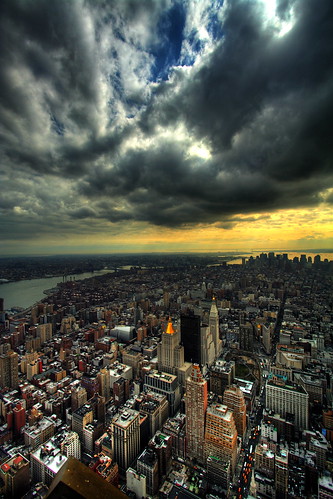At a campaign stop in Montreal last month,
Michael Ignatieff spoke of his "ferocious passion" for Quebec because of the second chance at life the province gave his family when they arrived as Russian refugees in 1928. While I can't tell as moving a story, I definitely have what I'd call a ferouciuos passion for many things Quebecois. Apart from my wife, her family, the culture, scenery, poutine,
cretons, history,
Mordecai Richler and the many other things the province has given me, one of the things I appreciate the most is its appreciation for driving etiquette.
Yes, tailgating may be the province's unofficial provincial sport, and yes I do feel a bit morally superior knowing how to make a right hand turn on a red light, but Quebeckers respect the left hand passing lane like no other in the continent. On virtually any autoroute - rush hour aside - the left hand lane is almost always empty as far as the eye can see, except for cars moving out to pass before getting right back into the right hand lane.

I make the drive from Toronto to my wife's family's cottage in the
Eastern Townships half a dozen times a year, and each time it's the same. As soon as I cross into Quebec, traffic speeds up and people move to the right...my blood pressure lowers and I also relax my grip on the wheel. Going back - without even looking at the road signs or familiary scenery - I can tell the instant we're back in Ontario because of the almost magnetic pull of every other car to the left hand lane, where they happily cruise at 110 km/hr while my grip tightens and blood boils.
The concept of the left hand passing lane works, and it's there for a reason. It fosters a smoother flow of traffic, reduces fuel consumption from slowing down and speeding up, and it eliminates the need for deadly weaving and right hand passing (I'm a civil engineer...I know this stuff!!). They teach you that in driving school, and signs are posted on highways throughout the country, so why are Quebeckers the only ones who get it???
Every time I make the drive - in addition to the rise/drop in blood pressure - I'm reminded of one of the funniest listener calls into a radio station I've ever heard. It was about 3-5 years ago on
Q107 and it involved two callers. They were both voicemails that went something like this:
Caller 1: Hi, I'm on the 401 right now stuck behind a stream of cars going 90 in the left lane and I'm calling to ask...am I the only (explitive) guy on the road who knows that the left hand lane is for passing??
Caller 2: Hi, I'm calling to respond to the guy who asked if he's the only one on the road that knows the left hand lane is for passing. No he's not...I'm the other one!!
Maybe you had to be there, but as the third (non-Quebecker) guy who apparently knows this, I get a kick out of the banter every time I think of it.





